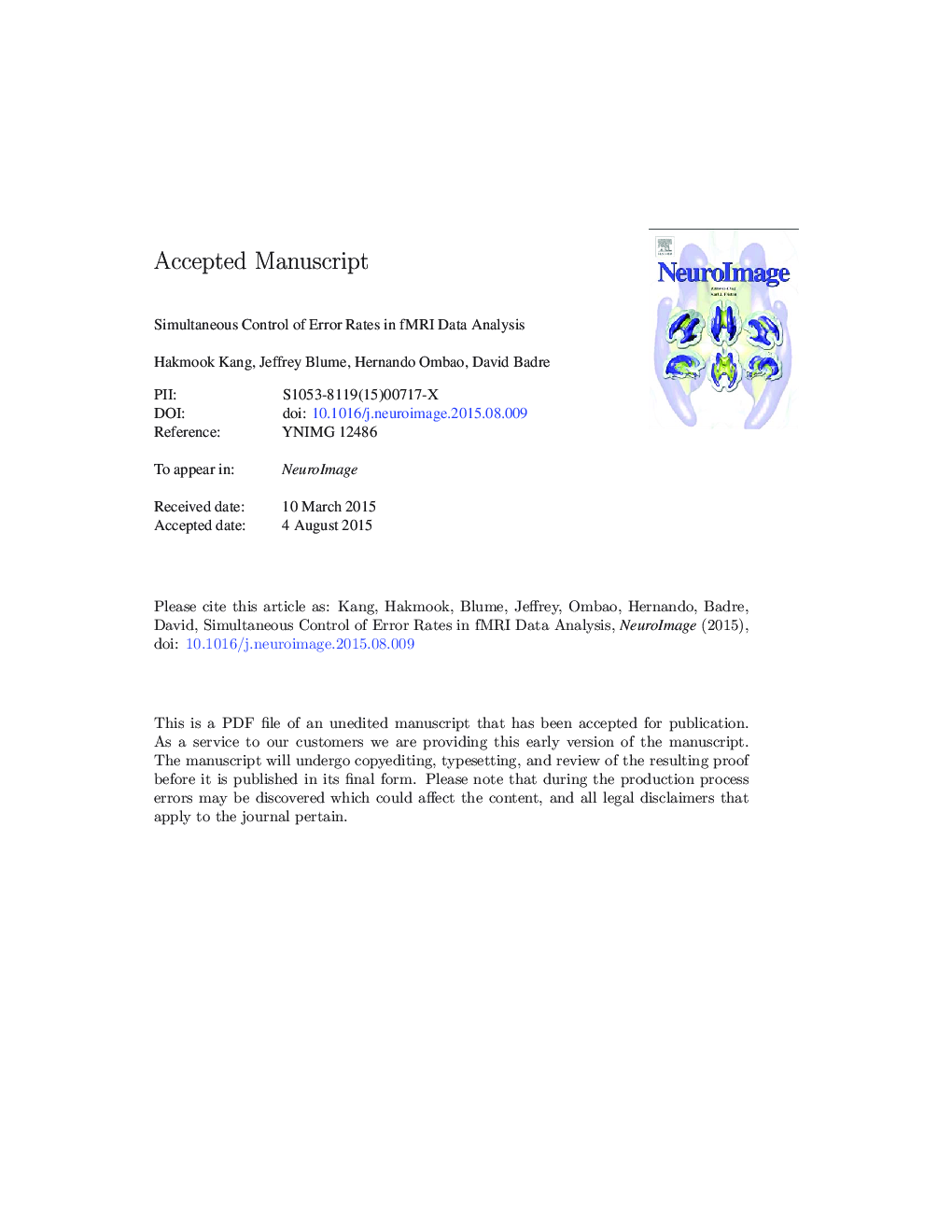| کد مقاله | کد نشریه | سال انتشار | مقاله انگلیسی | نسخه تمام متن |
|---|---|---|---|---|
| 6024729 | 1580884 | 2015 | 26 صفحه PDF | دانلود رایگان |
عنوان انگلیسی مقاله ISI
Simultaneous control of error rates in fMRI data analysis
دانلود مقاله + سفارش ترجمه
دانلود مقاله ISI انگلیسی
رایگان برای ایرانیان
کلمات کلیدی
موضوعات مرتبط
علوم زیستی و بیوفناوری
علم عصب شناسی
علوم اعصاب شناختی
پیش نمایش صفحه اول مقاله

چکیده انگلیسی
The key idea of statistical hypothesis testing is to fix, and thereby control, the Type I error (false positive) rate across samples of any size. Multiple comparisons inflate the global (family-wise) Type I error rate and the traditional solution to maintaining control of the error rate is to increase the local (comparison-wise) Type II error (false negative) rates. However, in the analysis of human brain imaging data, the number of comparisons is so large that this solution breaks down: the local Type II error rate ends up being so large that scientifically meaningful analysis is precluded. Here we propose a novel solution to this problem: allow the Type I error rate to converge to zero along with the Type II error rate. It works because when the Type I error rate per comparison is very small, the accumulation (or global) Type I error rate is also small. This solution is achieved by employing the likelihood paradigm, which uses likelihood ratios to measure the strength of evidence on a voxel-by-voxel basis. In this paper, we provide theoretical and empirical justification for a likelihood approach to the analysis of human brain imaging data. In addition, we present extensive simulations that show the likelihood approach is viable, leading to “cleaner”-looking brain maps and operational superiority (lower average error rate). Finally, we include a case study on cognitive control related activation in the prefrontal cortex of the human brain.
ناشر
Database: Elsevier - ScienceDirect (ساینس دایرکت)
Journal: NeuroImage - Volume 123, December 2015, Pages 102-113
Journal: NeuroImage - Volume 123, December 2015, Pages 102-113
نویسندگان
Hakmook Kang, Jeffrey Blume, Hernando Ombao, David Badre,